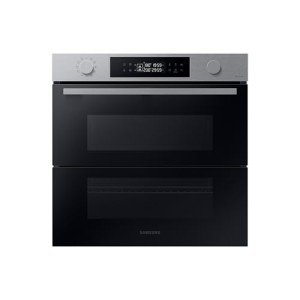10 Myths Your Boss Has About Oven Built In
페이지 정보

본문
Understanding Built-in Electric Ovens: A Comprehensive Guide
In modern-day cooking areas, built-in electric ovens have actually become a basic function, offering benefit, efficiency, and an elegant integration into kitchen design. This post intends to notify property owners and cooking enthusiasts about the benefits of Built In Ovens Electric-in electric ovens, crucial factors to consider when selecting one, and maintenance tips to guarantee long-lasting functionality.
What is a Built-in Electric Oven?
A built-in electric oven is designed to be set up within cabinetry or walls, perfectly mixing into the kitchen's architecture. Unlike standalone ovens, these designs save floor space and can be positioned at eye level, assisting in simple gain access to and monitoring while cooking.
Benefits of Built-in Electric Ovens
- Area Efficiency: These ovens utilize vertical area, making them perfect for smaller sized cooking areas or those seeking to take full advantage of counter space.
- Aesthetic Appeal: Built-in ovens offer a clean and contemporary appearance that boosts the kitchen's general style.
- Ergonomics: They are set up at comfy heights, reducing the stress on the back and knees, specifically when packing or dumping dishes.
- Advanced Features: Many built-in electric ovens included high-tech functions like wise controls, convection cooking, and self-cleaning options, which can make cooking easier and more effective.
- Enhanced Functionality: Models typically consist of extra features such as numerous cooking modes, Built in Ovens electric timers, and temperature probes.
Secret Considerations When Choosing a Built-in Electric Oven
When selecting a built-in electric oven, several factors need to be considered to ensure it satisfies your cooking requires and fits within your kitchen layout.
Size and Capacity
Built-in electric ovens usually can be found in various sizes. It's vital to measure the allocated space to guarantee a correct fit. Here prevail sizes:
- Single Oven: 24 to 30 inches wide, appropriate for the majority of cooking tasks.
- Double Oven: Two different compartments, permitting you to cook several dishes at different temperature levels.
- Wall Ovens: Available in plus sizes, fit for substantial cooking experiences.
Functions
Choosing functions that line up with your cooking habits is essential. Think about the following choices:
- Convection Cooking: Distributes heat equally for constant outcomes.
- Smart Technology: Enables remote control and preheating via smartphone apps.
- Self-Cleaning: Simplifies maintenance and cleaning processes.
- Steam Cooking: Adds moisture to meals for much better cooking results.
Setup Requirements
built in oven to buy-in electric ovens require appropriate electrical circuitry and ventilation alternatives. It's recommended to speak with specialists during the installation phase to meet electrical codes and guarantee safety.

Rate Range
The cost of built-in electric ovens can differ considerably from budget plan options (₤ 600 - ₤ 1,200) to high-end models (₤ 2,000 and above). Consider your spending plan and cooking frequency when selecting.
| Rate Range | Functions | Best For |
|---|---|---|
| ₤ 600 - ₤ 1,200 | Basic functions, manual controls | Casual cooks |
| ₤ 1,200 - ₤ 2,000 | Convection, smart technology | Major home cooks |
| Above ₤ 2,000 | Premium products, advanced features | Expert chefs or premium cooking lovers |
Maintenance Tips for Built-in Electric Ovens
Making sure that an electric oven runs effectively includes routine maintenance. Here are some useful ideas:
- Regular Cleaning: Wipe down the door and inside the oven after each usage to prevent grease accumulation.
- Self-Cleaning Cycle: Utilize the self-cleaning function periodically (if offered). Follow the maker's guidelines for optimal efficiency.
- Check Seals and Gaskets: Inspect the door seals for wear and tear to keep cooking efficiency.
- Adjust Temperature: Regularly check and calibrate the oven's temperature for precision cooking.
- Professional Servicing: Schedule annual maintenance talk to qualified professionals, specifically for sophisticated models with various electronic parts.
Frequently Asked Questions (FAQs)
1. Are built-in electric ovens more efficient than standard ovens?
Yes, built-in electric ovens typically have better insulation and features like convection cooking that can cook food faster and evenly, saving energy.
2. Can I install a built-in electric oven myself?
While some convenient people might choose to try a DIY installation, it is recommended to work with a professional to make sure safe and certified setup.
3. Just how much power does a built-in electric oven usage?
Normally, built-in electric ovens take build in oven in between 2,400 to 5,000 watts, depending upon the model and functions. Constantly describe the manufacturer's requirements for accurate figures.
4. Do built-in electric ovens need unique cabinets?
Yes, built-in electric builtin ovens need custom cabinetry or wall enclaves that support their weight and permit for appropriate ventilation. Make sure that the kitchen cabinetry complies with installation guidelines described by the maker.
Built-in electric ovens are a valuable addition to any contemporary kitchen, offering a selection of features that make cooking more convenient and enjoyable. By understanding the advantages, choice criteria, and upkeep requirements associated with these ovens, Built In Ovens Electric consumers can make educated decisions that line up with their culinary needs and way of life preferences.
- 이전글10 Startups That'll Change The Railroad Settlement Copd Industry For The Better 25.05.19
- 다음글The 10 Scariest Things About Double Glazing Windows Luton 25.05.19
댓글목록
등록된 댓글이 없습니다.



